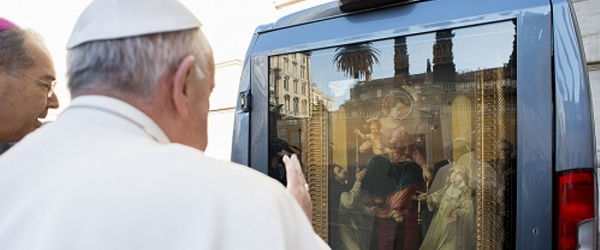The parable of the Prodigal Son, the Cycle C reading for the Fourth Sunday of Lent, is only found in the Gospel of Luke (Ch. 15). It is also one of the 24 stories that the Evangelist uses to illustrate Christ’s teachings. This parable of loss and redemption compares one son’s wasteful extravagance with the elder son’s bitterness and resentment — but both of them are loved by their father. Jesus uses this story of loss and redemption as a rebuke to the complaints of the Pharisees and scribes who labeled him as a “man who welcomes sinners and eats with them.” The poignant story of the prodigal and his brother follow the two parables of the Lost Sheep and the Lost Coin in Luke’s account. This trilogy embodies the theme of redemption, of what “was lost and has been found.” The well-known Biblical story has inspired artists through the ages to portray the conflict between youthful indulgence and parental concern in a variety of poses and impressions.One of the most noteworthy is that of the artist Rembrandt in his portrayal of Return of the Prodigal Son at the Hermitage Museum in St. Petersburg. The artist rendered several versions, but the final masterpiece he completed shortly before his death has been called by some the greatest picture ever painted. The masterful rendition of the homecoming painting so impressed the renowned writer Henri Nouwen that he spent hours in quiet contemplation when first viewing the original in a special appointment at the Hermitage. He subsequently wrote a book, “The Return of the Prodigal Son,” to record the dramatic impression and message the painting held for him. “I was stunned by its majestic beauty,” he notes, “but most of all the light-enveloped embrace of father and son … gripped me with intensity far beyond my anticipation.” Nouwen devotes chapters to each of the three main characters, their position in the painting, the impact of their relationships and the subsequent impact in his own life. In particular, the author notes the silence that exists between father and forgiven son, the tender gesture of the father’s hands and the realization that both sons need a forgiving father.In conclusion Nouwen observes, “As I look at my own aging hands, I know that they have been given to me to stretch out toward all who suffer … and to offer the blessing that emerges from the immensity of God’s love.” The parable epitomized in the painting emphasizes the truth of finding redemption from loss.—Hermine Lees{gallery width=100 height=100}gallery/2013/0308/liturgy/{/gallery}

